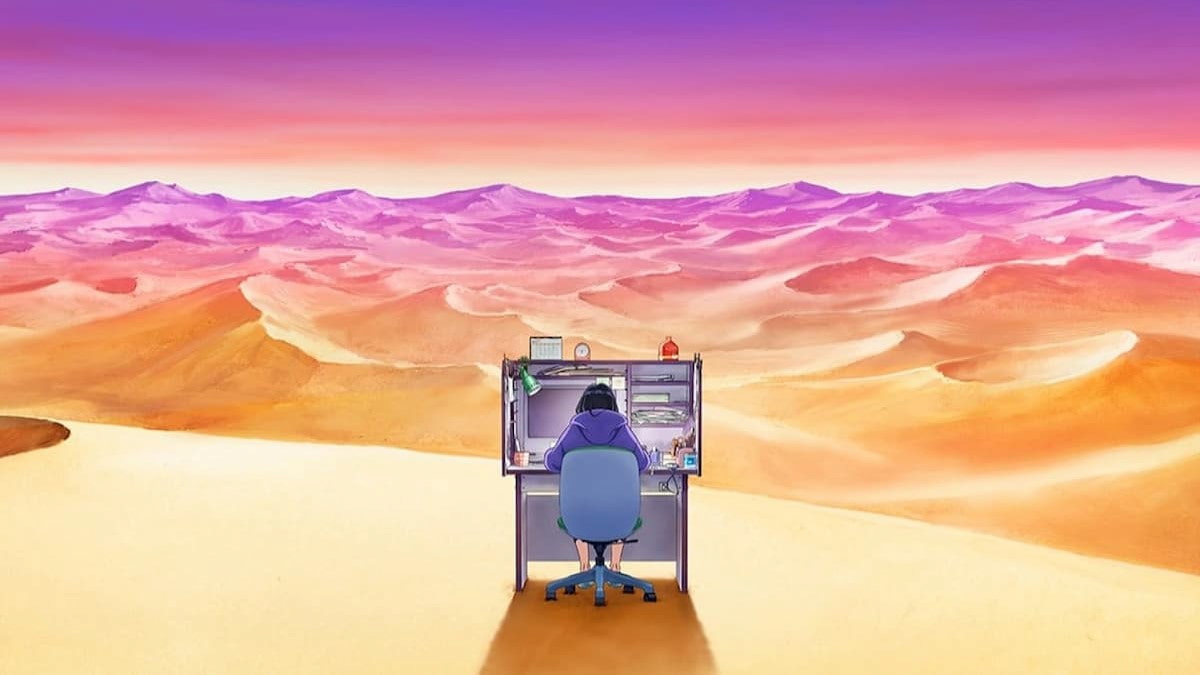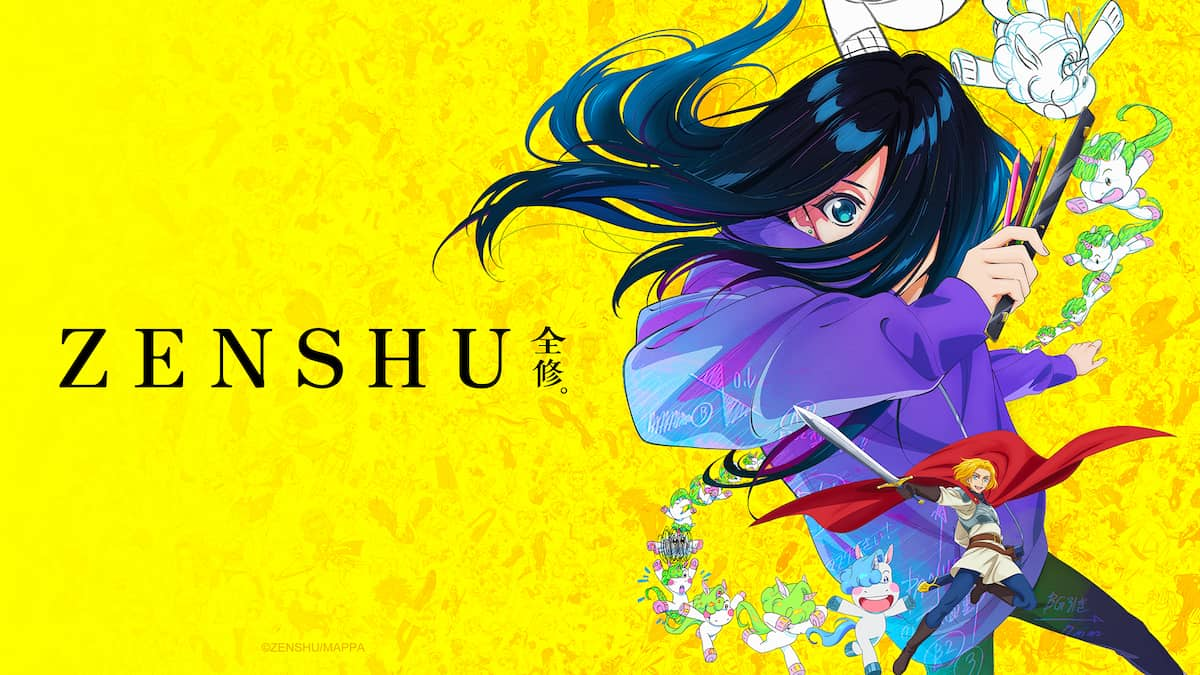Anytime I’ve been blown away by animation, MAPPA studio is somehow always involved. First, with its magnum opus of Attack on Titan’s final season and again with Jujutsu Kaisen’s cinematic showdowns. So, when I heard that MAPPA was responsible for the animation of Zenshu, I knew another masterpiece was brewing.
While I’ve grown accustomed to their distinct artwork, there’s something unique to what they’ve done with Zenshu. The vibrant colors in each scene remind me of the radiant artistry of Hayao Miyazaki, crafting the most picturesque scenes I’ve ever witnessed in anime. The use of colors is unlike anything MAPPA has done before, as the previous projects have primarily leaned toward a much darker tone. Moreover, the show blends two different art styles when it seamlessly merges separate worlds: one in modern times and the other in a medieval-like universe.

The beginning of Zenshu’s first episode depicts the everyday life of the real world, where the main protagonist, Natsuko Hirose, is a successful animation director. Her first project was a triumph, but she begins to doubt the work of her next potential big hit. As an artist myself, I immensely related to this. This concept is new for a MAPPA show since, for the most part, I’ve only known them for anime that overflows with intensity and not one that follows the life of an everyday Joe.
At this point in the story, Zenshu could be seen as a slice-of-life in hindsight, yet things start to change once you get further into the episode. When Natsuko drowns in her workload, she finds herself waking up in her childhood favorite anime, “A Tale of Perishing.” The film is basically all your favorite anime rolled up into one. You’ve got your stereotypical hero protagonist, Luke Braveheart. A trusty companion at his side that will do anything for him. And, of course, there is some big bad that the ensemble has to defeat to save their world.

It brings out one of my favorite cliché tropes: the old world mixes with the new, like when someone from, let’s say, the ancient or medieval times mingles into our modern ways of life, like Marvel’s Thor and Enchanted’s Giselle. In Zenshu, it is Hirose who must deal with this Middle Ages world, and her reactions are both realistic and hilarious. She questions the logic of the film significantly when the stead, Unio, by some means, goes through a majestic transformation in the blink of an eye. How is it possible? I have no idea. But I suppose that’s anime logic for ya.
Despite Natsuko’s confusion, she starts to use her knowledge of the anime to her advantage. She knows the lines spoken by random side characters and the cataclysmic event that transpires not long after. The anime is called “A Tale of Perishing” for a reason, and it’s up to Natsuko to decide if she wants to change the show’s fate.
I’ll leave you in suspense as to what Hirose decides, but I will say that it is more than worth the watch. Zenshu’s main character, in particular, is the reason why the show is so enjoyable. The rest of the cast is great, too, but the first episode doesn’t expand on them all that much. It’s just lovely to see a female lead take the reigns where men and women alike depend on her guidance. Anime, at least for me, sometimes feels like a man’s world, so having a storyline such as this is an exceptional change of pace.
Hirose isn’t perfect either; she’s incredibly insecure despite being high up on the food chain. She even hides her face with her hair just to be in her own little world. Overall, the depiction of her is what I’ve been looking for in a female anime character, where she’s not dressed up in some sexy get-up, relying on a manly heroic protagonist, or flawless in everything she does. I know that there are some anime out there like this, in light of narratives such as Frieren: Beyond Journey’s End and Sailor Moon, but I still feel like there needs to be more.

Beyond its realistic interpretations of women, Zenshu evokes a sense of nostalgia that reminds me of the first anime I experienced as a kid. It often shows Natsuko Hirose reminiscing about her childhood with A Tale of Perishing, and you can tell how much it still means to her as an adult. As someone who grew up on anime, I can deeply relate to this feeling, and I’m sure you will too if you’re a long-time anime fan.
I also like how A Tale of Perishing wasn’t even that well-received in Hirose’s world, but it meant something to her, nonetheless. There were more than enough times when the critics gutted a favorite show or movie of my childhood, and watching Hirose experience the same turmoil made me reminisce about that. This concept instills a message that even if some people don’t like your work, all that matters is that at least one person sees the beauty in it. It’s probably something that Hirose needs to learn with her personal projects, which may come in future episodes.
Just by Zenshu’s first episode, I’ve already gotten hooked on the series. Those in the creative arts will feel seen, and anime lovers will remember the nostalgia of the first-ever show that brought them into the anime world. The breathtaking visuals by MAPPA alone may persuade you, as they did for me. And, if you’re convinced enough, you can expect new Zenshu episodes to air on Crunchyroll every Sunday.








